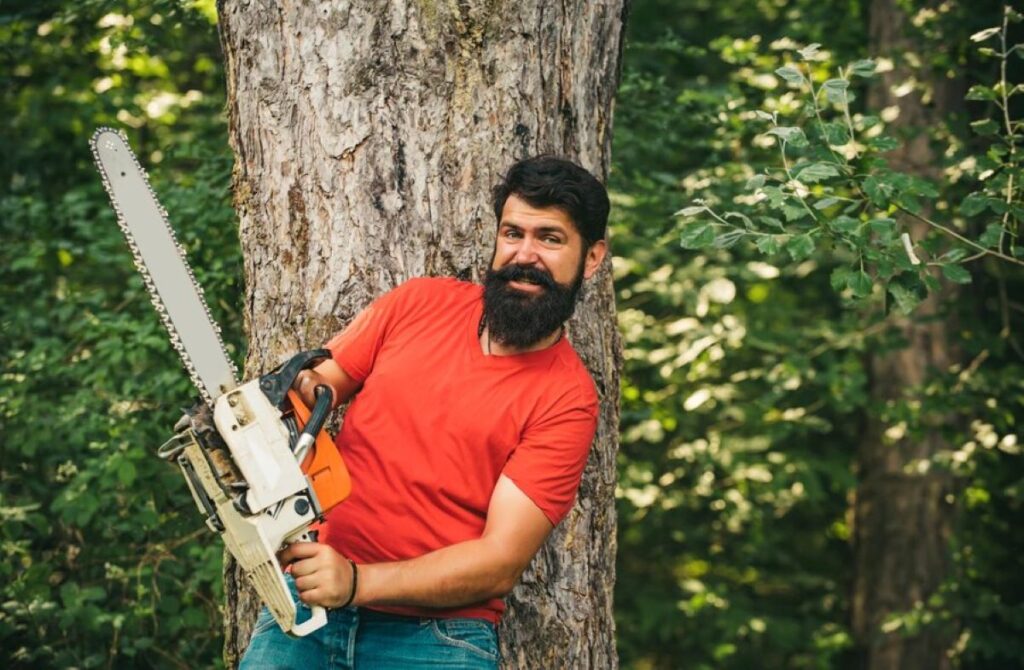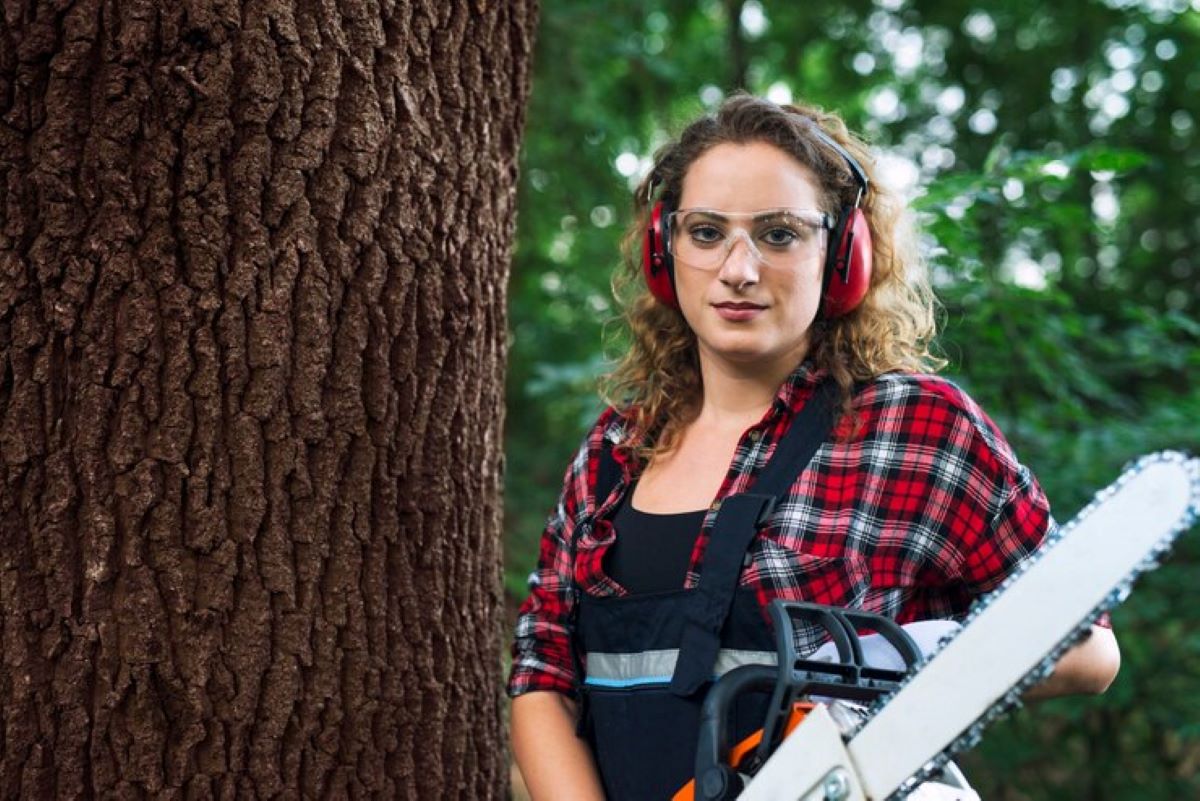How Can You Protect Young Trees from Storm and Wind Damage in Cherrybrook?
Protecting young trees from storm and wind damage requires a combination of strategic planting, proper support systems, and ongoing maintenance practices. Consulting an arborist in Cherrybrook is essential for developing an effective storm-proofing plan tailored to your specific trees and local conditions.
Young trYoung trees face unique challenges during severe weather. Their shallow root systems and flexible trunks make them susceptible to uprooting, snapping, and long-term structural damage. Without proper protection, a single storm can undo years of growth.
The most effective approach combines multiple strategies:
- Selecting protected planting locations
- Installing appropriate staking systems
- Implementing regular pruning schedules
- Maintaining healthy root development
- Creating natural windbreaks
Each technique addresses different vulnerabilities, working together to build resilience. An experienced Arborist Cherrybrook professional can assess your property’s microclimate, identify high-risk areas, and recommend species-specific protection methods. This expert guidance ensures your young trees develop the strength needed to withstand Cherrybrook’s variable weather patterns whilst establishing healthy growth for decades to come.
Why Are Young Trees More Vulnerable to Storm and Wind Damage?
Young trees are more vulnerable to storm and wind damage due to their immature root systems and less developed sturdy trunks. Newly planted trees usually have shallow, compact root balls that haven’t spread enough to anchor them against strong gusts. Their trunks lack the thickness and structural strength of older trees, making them susceptible to bending, breaking, or being uprooted during severe weather.
Storm damage can occur in several destructive ways:
- Uprooting: Shallow roots cannot grip soil firmly when saturated ground combines with strong winds
- Trunk breakage: Flexible but weak stems snap under sustained wind pressure
- Branch failure: Developing limbs with poor attachment points tear away easily
- Root rock: Constant movement loosens the root ball, creating air pockets that compromise stability
Strong winds also add extra stress by stripping leaves, leading to dehydration from excessive moisture loss. This combination of physical damage and physiological stress can hinder growth for years or even kill young trees that haven’t developed proper structural defences. It’s crucial to take preventive measures such as preparing trees for hurricanes to mitigate these risks.
How Does Planting Location Influence Tree Protection Against Wind?
Choosing a sheltered planting location is the first step in protecting young trees from wind damage. By placing trees near buildings, fences, or established vegetation, you can create natural wind protection that slows down the wind before it reaches vulnerable saplings.
Understanding Your Property’s Microclimate
Strategic tree placement requires understanding your property’s microclimate. Buildings on the western or southern sides of a planting site can shield young trees from the strongest prevailing winds common in Cherrybrook. Existing mature trees act as effective windbreaks, creating calmer pockets of air where young specimens can establish themselves safely.
Analyzing Wind Direction for Storm Damage Prevention
Wind direction analysis before planting significantly reduces the risk of future storm damage. Observe which direction storms typically approach from during different seasons. Trees planted on the leeward side of structures receive significantly less wind stress than those in exposed positions.
Finding the Right Distance for Optimal Protection
The spacing between natural barriers and your young tree matters too. Planting too close to buildings may limit root space, whilst positioning too far away reduces protective benefits. A distance of 2-3 metres from structures typically balances both shelter and growing room effectively.
Utilizing Natural Windbreaks for Enhanced Protection
In addition to choosing sheltered locations and strategic spacing, it’s also beneficial to consider incorporating natural windbreaks into your landscape design. These could include rows of shrubs or trees that are specifically chosen for their ability to withstand strong winds. Such natural barriers not only provide additional protection to young trees but also contribute to biodiversity and improve soil quality in the long run.
Why Is Staking Essential for Supporting Young Trees During Storms?
Staking young trees provides critical stability during storms by anchoring the trunk and allowing the root system to establish itself without excessive movement. Tree support stakes prevent the trunk from swaying violently, which could loosen soil around developing roots or cause the tree to lean permanently.
Proper staking technique makes all the difference. Use soft fabric ties rather than wire or rigid materials that can cut into bark and damage the trunk. The ties should form a figure-eight pattern between the stake and tree, creating a buffer that allows slight movement whilst preventing harsh rubbing. Position stakes at least 30 centimetres from the trunk to avoid root damage.
Key staking guidelines:
- Install stakes at a 45-degree angle pointing into prevailing winds
- Allow 5-10 centimetres of trunk movement to encourage natural strength development
- Check ties every few months, loosening them as the trunk expands
- Remove stakes after 12-18 months once roots have established
An arborist in Cherrybrook can assess whether your young tree requires staking based on its species, size, and exposure to wind conditions.
How Can Pruning Help Young Trees Withstand Strong Winds?
Pruning young trees eliminates weak or damaged branches before storms strike, preventing these vulnerable limbs from breaking and causing further injury to the tree. Strategic branch removal targets crossing branches, dead wood, and poorly attached limbs that act as weak points during high winds.
Canopy density reduction through selective pruning creates a more open structure that allows wind to pass through rather than against the tree. Dense canopies act like sails, catching wind and placing enormous stress on the trunk and root system. By thinning the canopy, you reduce this sail effect whilst maintaining the tree’s natural shape.
Creating a compact, well-balanced canopy structure distributes weight evenly across the tree’s framework. This balanced approach to pruning prevents the tree from developing a lopsided crown that could pull the entire tree over during storms. Proper pruning cuts should be made just outside the branch collar to promote healthy healing and maintain the tree’s natural defence mechanisms against disease.
Wind resistance improves significantly when young trees receive annual pruning during their dormant season, allowing them to develop strong, flexible branch structures.
When and How Should Protective Covers Be Used on Young Trees?
Protective tree covers work best for very young or newly planted trees during severe weather events. Burlap wraps and row covers provide wind abrasion prevention by shielding delicate bark from harsh winds and flying debris. These covers should only be applied when storms are forecasted, not as permanent fixtures.
The key to successful cover use lies in proper application:
- Wrap loosely around the trunk and lower branches
- Leave the top open to allow air circulation
- Ensure covers don’t touch the ground to prevent moisture accumulation
- Use breathable materials that permit some sunlight penetration
Remove covers within 24-48 hours after storm conditions pass. Extended use blocks essential sunlight and traps moisture against bark, creating ideal conditions for fungal growth and rot. Heat buildup under covers can also stress young trees during warmer months. Check wrapped trees regularly during storm season to monitor for any signs of moisture damage or restricted growth beneath the protective material.

What Root Care Practices Strengthen Young Trees Against Storm Damage?
Healthy root systems anchor young trees securely in the ground, making them far less likely to topple during severe weather. Strong roots develop through consistent watering techniques that encourage deep growth rather than shallow surface roots.
Proper watering schedules involve deep, infrequent watering sessions that penetrate 30-45 centimetres into the soil. This approach trains roots to grow downward, creating a stable foundation that resists uprooting during high winds. Shallow, frequent watering produces weak surface roots that cannot withstand storm forces.
Mulching benefits extend beyond moisture retention. A 7-10 centimetre layer of organic mulch around the tree base:
- Regulates soil temperature and prevents root stress
- Reduces competition from grass and weeds that steal nutrients
- Protects roots from lawn equipment damage
- Improves soil structure as it decomposes
Keep mulch several centimetres away from the trunk to prevent rot. An Arborist Cherrybrook can assess your specific soil conditions and recommend customised root care young trees strategies that address local climate challenges and soil composition.
How Do Windbreaks Contribute to Protecting Young Trees in Cherrybrook?
Windbreaks for trees reduce wind speed by up to 50%, creating calmer areas that shield vulnerable young trees from storm damage. Establishing barriers through planting groups of trees or positioning saplings near existing structures creates natural protection zones where wind speed decreases significantly.
Strategic windbreak placement works best when positioned perpendicular to prevailing winds. Dense evergreen species planted in rows form effective barriers, whilst deciduous trees grouped together provide seasonal protection. The protected zone typically extends 5-10 times the height of the windbreak, offering substantial coverage for multiple young trees.
Key windbreak benefits include:
- Reduced mechanical stress on developing trunks
- Lower risk of branch breakage during storms
- Decreased soil erosion around root zones
- Improved moisture retention in sheltered areas
Spacing matters when creating windbreaks. Trees planted too closely compete for resources, whilst excessive gaps allow wind tunnelling. A distance of 1.5-2 times the mature tree width between specimens balances protection with healthy growth. Combining different tree heights creates layered defence, with taller species blocking high winds and shorter plantings protecting ground-level growth.
Why Should You Consult an Arborist in Cherrybrook for Tree Storm-Proofing?
Professional arborist consultation Cherrybrook services provide expertise that goes beyond general tree care advice. Arborists assess your specific tree species, soil conditions, and local weather patterns to develop customised protection strategies that address your property’s unique vulnerabilities.
Local arborists understand Cherrybrook’s seasonal storm patterns and can identify which trees face the greatest risk. They evaluate structural weaknesses invisible to untrained eyes, such as poor branch angles, root plate stability, and growth defects that compromise storm resistance.
Species-specific knowledge proves invaluable when storm-proofing young trees. Different species require distinct staking methods, pruning schedules, and support systems. Native Australian trees often need different approaches compared to exotic species common in suburban landscapes.
Arborists also monitor tree development over time, adjusting protection measures as trees mature. They can:
- Recommend optimal planting positions based on wind exposure mapping
- Design staking systems appropriate for trunk diameter and height
- Schedule pruning interventions that strengthen rather than weaken young trees
- Identify disease or pest issues that reduce storm resilience

Protect Your Young Trees from Storm and Wind Damage Today! Contact a Local Arborist in Cherrybrook for Expert Assistance!
Taking immediate action to protect young trees Cherrybrook starts with professional guidance. Local arborists understand the unique challenges that Cherrybrook’s climate and weather patterns present to developing trees.
A qualified Arborist Cherrybrook how to protect young trees from storm and wind damage brings invaluable expertise to your property. They assess your specific landscape conditions, evaluate each tree’s vulnerability, and implement customised storm-proofing strategies that match your trees’ species and growth stage.
Don’t wait until the next storm threatens your investment. Reach out to a Cherrybrook arborist who can develop a comprehensive protection plan, ensuring your young trees grow into strong, resilient specimens capable of weathering severe conditions for decades to come.
More to Read : Best Small Tree Species for Narrow Blocks in Roseville


Comments are closed